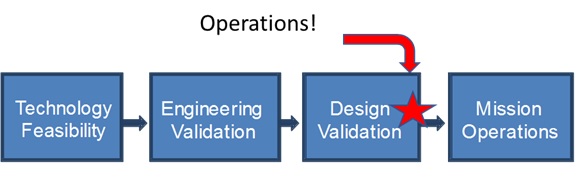Architecture Note #24
The Path to Tech Readiness!
Space Elevator Transportation System
Preface: This
Architecture Note addresses a milestone for all of us in ISEC. It documents, in
summary form, how we have entered the Space Elevator Era. The discussion
explains how we moved from a roadmap study in 2014 to today; ready to declare
“Tech Ready”. All readers should at
least examine the graphics and understand them.
Industry must now get involved, and we should help them.
Michael A. Fitzgerald
Background: In
the last 6 years, ISEC’s Technology Maturation approach has melded with a
better definition of the Space Elevator engineering solution. The 2014 publication of ISEC’s “Architecture
and Roadmap” Report removed the shroud of mystery and myth from the Elevator’s
scope and complexity. The elevator was
no longer a mystery. “Design
Consideration” documents published between 2013 and 2017 delineated the
engineering approach for the Tether Climber, the Earth Port, the GEO Region,
and the Apex Anchor. An Architecture simulation
tool was selected. The last technology
hurdle - strong material for the tether – was conquered. Based on this technology maturity, and its
engineering momentum, we expect that by the middle of this century an
operational Space Elevator Transportation System will be built and
operating.
Further, the engineering substance of the Space Elevator has
solidified and become organized; most notably as the Galactic Harbour. The Galactic Harbour will support enterprise
activities along the GEO belt, factories and solar power generation near GEO,
efficient interplanetary departures from the Apex and arrivals at GEO.
Ultimately, products and materials will be delivered from space to the Earth
Port. All this, closer than you think!
The Technology Momentum of the Galactic Harbour is real; and
it underwrites the interplanetary vision of transportation, enterprise, and
exploration.
In the last year, the International Space Elevator
Consortium advocated that the basic technologies needs were available, and each
segment of the Space Elevator Transportation System was ready for engineering
validation. The ISEC position:
1. The
Galactic Harbour Earth Port --> ready for an engineering validation program
2. Space
Elevator Headquarters / Primary Operations Center --> ready to start an
engineering validation program
3. Tether
Climber --> Engineering model assemblies
needed; then start an engineering validation program
4. GEO Node --> Engineering discussions and demonstrations with key members of Industry
needed; and collaboration / outreach with certain government offices.
5. Apex
Anchor --> Engineering discussions and various simulations needed. Near term collaboration with engineering
organizations and academia should be started. Then outreach to key members of
Industry and government offices. Engineering validation follows.
6. Tether
material --> Prime material candidate
identified. Production demonstrations needed.
7. Collision
avoidance --> Architecture engineering definition
being finalized. Candidate concepts are identified. On orbit performance
demonstrations are need.
Question: Where
are we, exactly?
Answer: We
are nearing the end of the Technology Development Phase
During our 2014 roadmapping effort, it seemed evident that
within the envisioned Space Elevator Architecture, new entities and
technologies would be required; engineering approaches needed refinement, and
new materials need to be found. In street talk, we need new stuff, new ways to
make it, and new ways to operate such things.
A technology development approach was built; based upon a
development approach of “Show Me.” The
“Show Me’s” were essentially a set of well-constructed demonstrations,
inspections, tests, simulations, experiments and analyses - best conducted by
industry (since industry would be building the elevator).
ISEC also noted that each segment of the elevator had its
own challenges and would likely need to resolve those challenges in segment
unique manner. The technology and
engineering issues facing something at the equator and in the middle of the
Pacific Ocean are not directly relatable to something at the APEX Anchor at
100,000 kilometers above the equator; and indeed, in the middle of “Outer
Space”. As much as the issues are
dissimilar, they are the same. Define
them, mature the solutions, and determine if we can build something from
them. Our work retains that theme.
ISEC’s technology development follows a tried and true
sequence. Our approach extends the thinking of the commercial space industry
and their technology plans.

The progress within the plan continues to be based upon an
iterative approach to risk mitigation; recurring Technology Readiness
Assessments, culminating in operations demonstrations & prototypes, … i. e.
“Show me!”

All this This This approach ensures mission success at
Initial Operational Capability at the end of phase 3.

The ISEC team has been assessing the technology feasibility
situation since 2008. In recent times,
the team has begun an open dialog with those members of industry, academia, and
others; who could be the deliverers of ISEC solutions. Industry (especially) will show how the
needed technologies are being matured and when they could be dependably
available. These readiness assessments are the Phase one
exit criteria:
• Document
technology readiness state. Determine if the technologies are State of Art
(SOA) or State of the industry (SOI) or State of the Market (SOM)
• Establish
readiness level rationale for all portions of the Program. Given that the
technology availability has been demonstrated the level of readiness can be
established for each program segment
• Set
Success Criteria regarding Engineering Validation Phase – the second phase.
Prudent acquisition planning calls for an early design review. “Show me” means
a lot at this point.
Question: Then
what?
Answer: Phase
two: Validate engineering approaches
Phase two will begin soon after phase one completion. Industry involvement is an imperative. Phase two activities are driven by six major
activities:
• Examine
Industry’s production foundation
• Determine
if the segments can be built
• Assess
schedule & technical risk:
• Delineate
design criteria
• Set
criteria and standards to enter the Design Validation Phase
• Baseline
operations performance:
In closing: We
need to spread the word. China and Japan
have each determined that the space elevator can be built. With that, outreach to Industry, academia,
and government has become part of our agenda.
Michael A. Fitzgerald
ISEC Chief Architect
Senior Exec VP and Co-Founder
Galactic Harbour Associates, Inc
Space Elevator Transportation & Enterprise Systems
